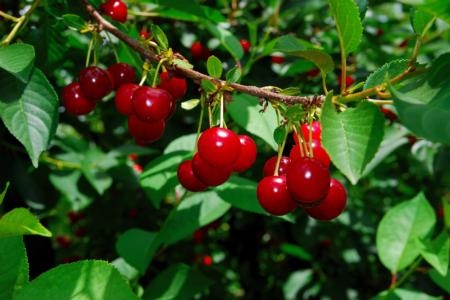UC Blogs
Natural Decorations for the Wreath Workshop
The wreath workshop is just days away. Master Gardeners have been busy gathering redwood, rosemary, lavender, Nadine and so much more greenery for people that attend to make a wreath of their own design.
Starting in late October-early November the Master Gardeners have been busy cutting drying, and spraying decorations for you to choose from to add to your wreath. We have agapanthus heads, hydrangea flowers, statice, lavender, pine cones, and so much more (feathers, grass flowers). In addition, participants are welcome to bring any items they have from home that they would like to add to their wreath. There are assorted colors of ribbon that can be made into bows to complement your wreath .
Food did I mention food? Yes there will be food and drinks for you to snack on, as you make your wreath. Complements of the Master Gardeners.
This event is held on the first Saturday of December at the Buck Mansion in Vacaville. Seating is limited to 40. If you have not registered on line this year to attend, it could be to late. Here is the link http://ucce.ucdavis.edu/survey/survey.cfm?surveynumber=9007 Make sure you mark your 2013 calendar in late October or early November to watch for the announcement for 2013 so you don’t miss this fun event next year.
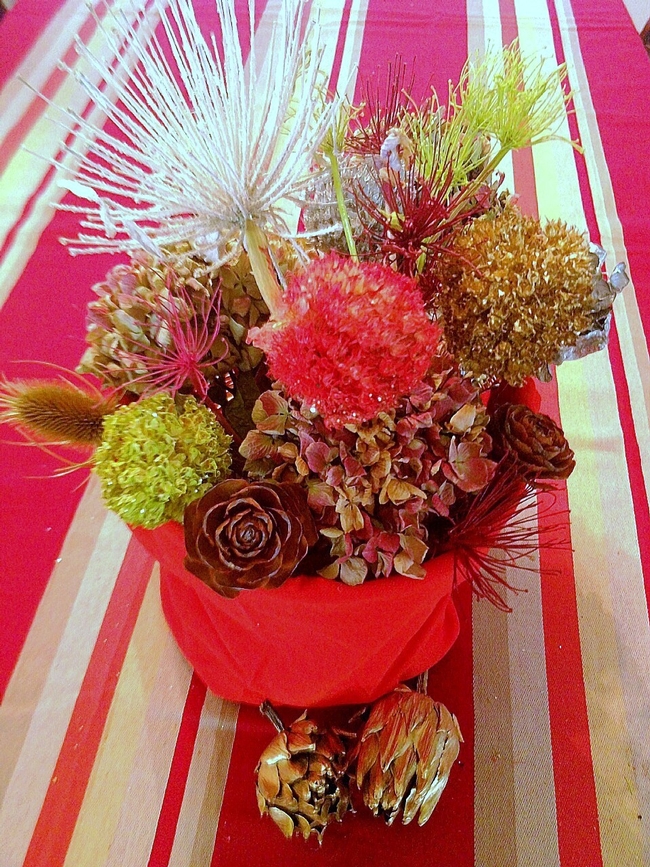
Various dried plants used for wreaths. (photos by Toni Greer)
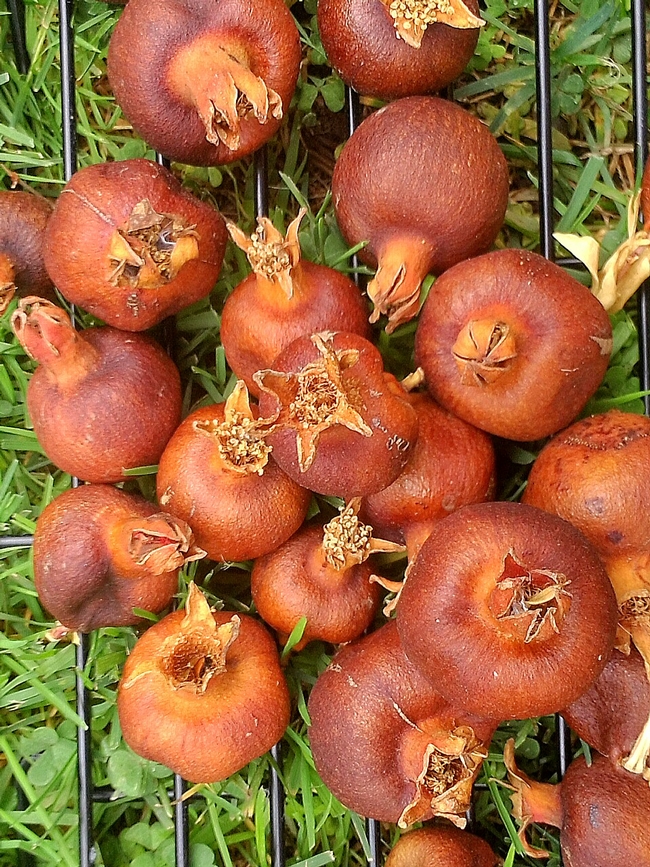
Dried ornamental pomegranates.
Two Asian citrus psyllids found in Tulare County
This week a quarantine goes into effect in some parts of Tulare County to stop the spread of Asian citrus psyllid, according to a 3-minute story on The California Report. The decision comes after officials found ACP in traps near Strathmore and Terra Bella. For an update on the pest and the disease it can carry, The California Report's Rachael Myrow spoke with Mark Hoddle, UC Cooperative Extension specialist in the Department of Entomology at UC Riverside.
Myrow asked why the effort to prevent movement of ACP has not been successful.
"It's very difficult to police the movement of all types of citrus plants in and out of infested areas," Hoddle said. "People may accidentally and unwittingly move plants that have Asian citrus psyllid on them out of infested areas in Southern California to uninfested areas. Another way these psyllids may move is they potentially have the ability to hitchhike on farm machinery or even vehicles."
Listen to the full interview here:
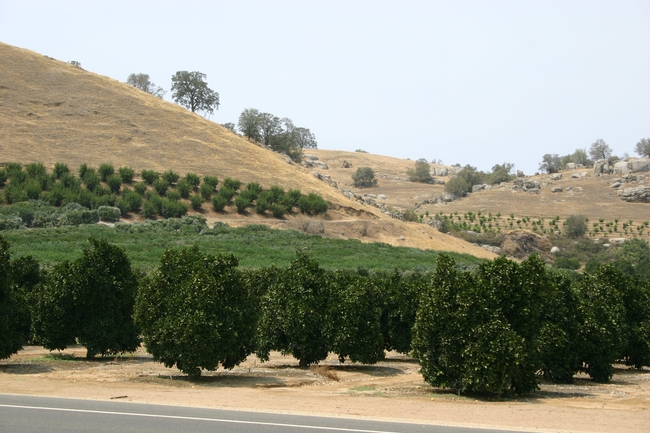
Some citrus orchards in Tulare County will have to comply with quarantine restrictions.
Strange Little Insect
It's a strange little insect. A reader likens it to "a cricket on steroids." A Van Nuys resident says she always wondered what they were. "I've...
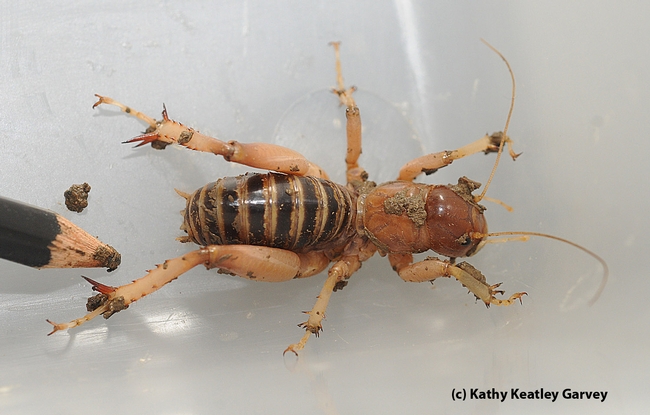
A Jerusalem cricket. (Photo by Kathy Keatley Garvey)
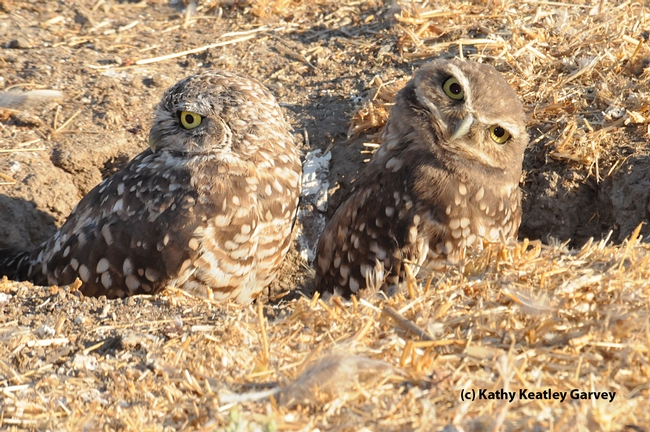
Burrowing owls feed on Jerusalem crickets. (Photo by Kathy Keatley Garvey)
It's a Bird, It's a Plane!
One of the many special joys of gardening is coming face to face with hummingbirds. I love to watch them sip from flowers or just perch and survey their territory. That's why Keith and I were thrilled to see a tiny hummingbird sampling the flowers at a flower box at a restaurant in Rudesheim, Germany. He was the tiniest thing we had ever seen. He was brown and rust and white and hummed and hovered enchantingly.
I vaguely remembered that there was a hummingbird referred to as a bee hummingbird, so that evening I lhit the Internet. No, the bee hummingbird is from Cuba and is a striking blue color which this creature was not. As I researched I found that there are no hummingbirds in Europe, only the New World. Interestingly about two years ago they did find hummingbird fossils near Frankfurt Germany. I did find out there was a zoo near Rudesheim that had a hummingbird enclosure; perhaps one had escaped.
Then I found a question to a bird site where someone else had seen a small hummingbird in Germany. The expert gently suggested that they had perhaps seen a European hummingbird hawk moth, Macroglossum stellatarum. No Way! I was a biology major. I'm a Master Gardener for crying out loud. I'm not going to mistake a moth for a bird. Nevertheless I did Google the European hummingbird hawk moth and sure enough that was exactly what my husband and I saw. The moth flies during the day time, hovers and even has the hummm of the hummingbird. It's incredible. They say it's an example of convergent evolution that they have ended up so similar. Take a look at the pictures that my husband took and see if you would have been fooled too.
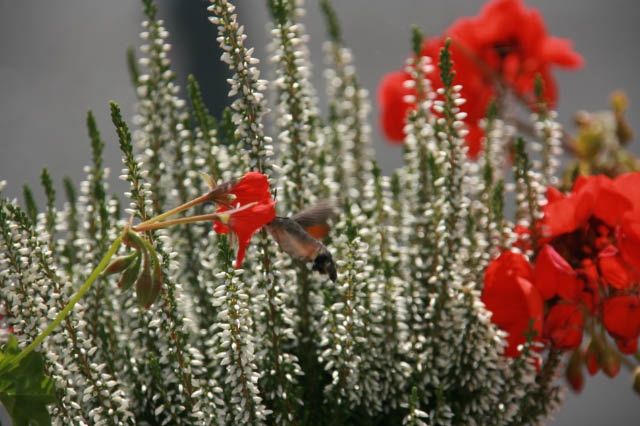
Macroglossum stellatarum. (photos by Keith Arrol)
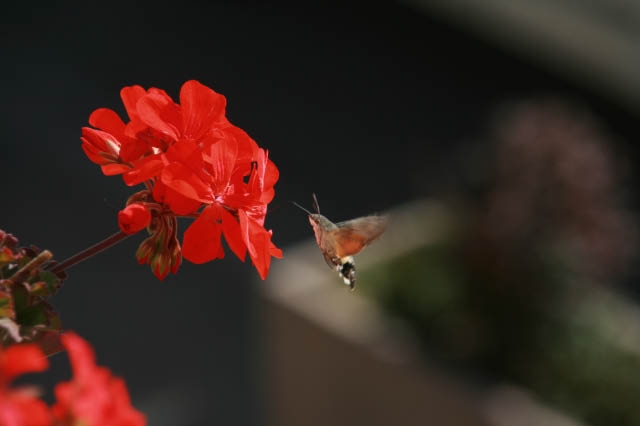
Note the antennae, hummingbirds don't have these.
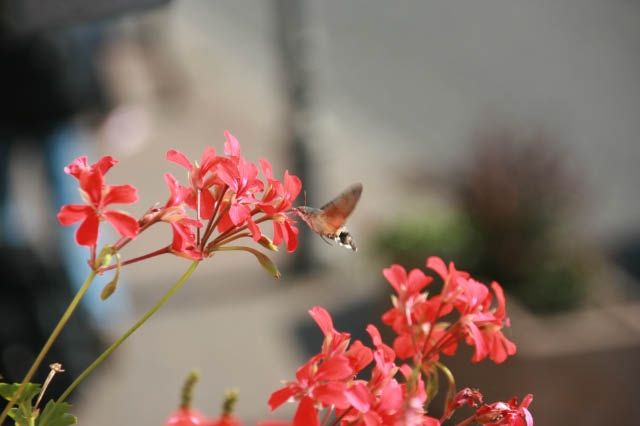
hummer moth
Farmers turning in greater numbers to mechanical harvesting
The dwindling supply of workers has created a new urgency for California farmers to employ mechanical harvesting technology, reported the San Luis Obispo Tribune.
Some cherry growers, for example, were able to pick only once this year, said Chuck Ingels, UC Cooperative Extension advisor in Sacramento County. Ideally, they'd pick as fruit colors and ripens.
"They're finding that if they can't get labor to pick their crops, they're just not able to farm anymore," Ingels said. "So what they're going to is mechanization."
UC Davis agriculture experts, farmers and industry leaders gathered last month in Orland to watch a demonstration of the first mechanical harvest of Manzanilla table olives in California. The new technology could revive the industry, the article said.
Even pear harvesting, a grueling job that requires workers to climb aluminum ladders with heavy bags of fruit, may be ripe for new harvest technology. For apples and pears, there are platforms for workers to stand on that move through the orchard while the workers feed the fruit into flexible tubes, where suction carries the fruit to bins.
"It's definitely on the radar for growers in the industry," Ingels said.


